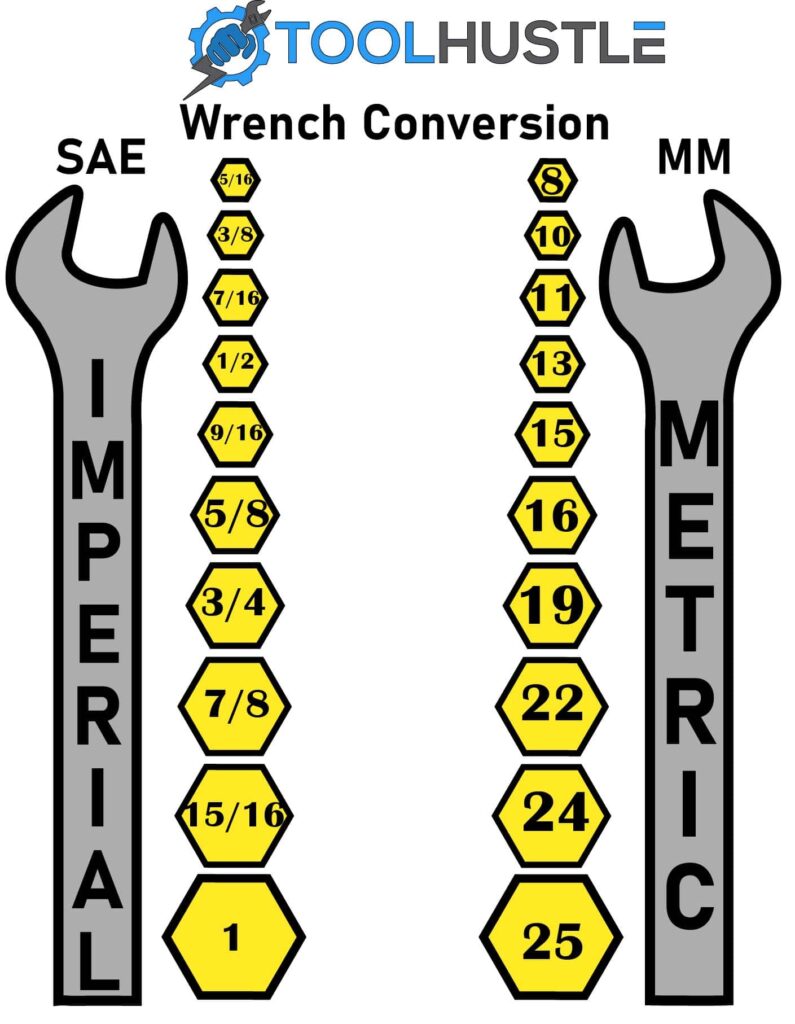
| IMPERIAL | METRIC |
| 5/16″ | 8mm |
| 3/8″ | 10mm |
| 7/16″ | 11mm |
| 1/2″ | 13mm |
| 9/16″ | 15mm |
| 5/8″ | 16mm |
| 3/4″ | 19mm |
| 7/8″ | 22mm |
| 15/16″ | 24mm |
| 1″ | 25mm |
Most people use both imperial and metric wrenches but sometimes you need both of the same sizes. For example, you want to crack open or set a jam nut on a rod. Having two wrenches would be amazing for this application. You could also use a crescent wrench but using the right sized wrench is far superior. On this wrench conversion chart are commonly used wrenches.
This table is meant as a reference for which imperial wrench can be substituted for a metric wrench and vice versa. This chart can also be applied to sockets as well which is a nice bonus.
It is important to remember in most applications you are better off using the right size wrench if you can. The last thing you need is a stripped nut or bolt. Below is an image of the chart you can use.
For some of these sizes, you can use another wrench as a substitute but this is based on what fits the best. For example, you could use a 14mm with a 9/16 but the fit is really tight. A 15mm wrench would not be tight on that nut. You can check out a metric drill and tap chart here, you can also check out an SAE drill and tap chart here.





